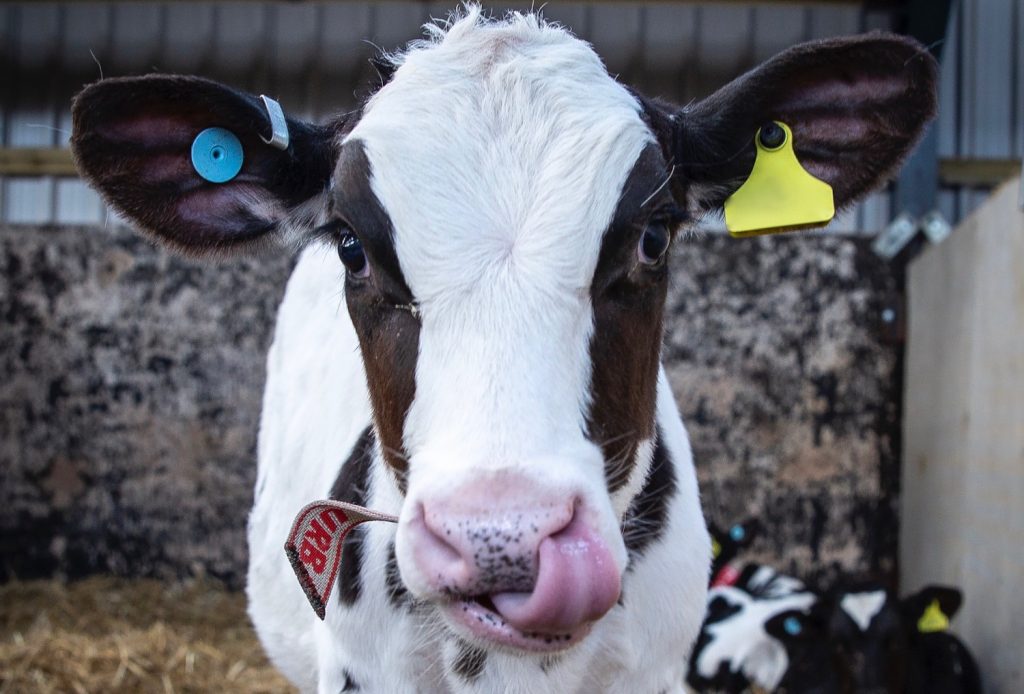Farmers urged to monitor for early signs of scour in calves
4th November 2020
Farmers are being urged to monitor for the early signs of scour in calves as part of a campaign to help save the industry £60 million a year.
Farmers are being urged to monitor for the early signs of scour in calves as part of a campaign to help save the industry £60 million a year.
It has been reported that about 170,000 of calves born alive each year die in their first month of life and it is estimated that up to 50 per cent of deaths are caused by scour, with over 48 per cent of dairy heifer calves diagnosed with scour preweaning.
The number of cases seen in the first month of age makes early detection and rapid management of the condition a priority to avoid unnecessary financial losses and impact on animal welfare, according to Ceva.
The most common cause of mortality in scouring animals is dehydration as a result of increased loss of fluids with scour, leading to a decreased ability to digest and absorb nutrients, decreased appetite and voluntary food intake, resulting in significant decreases in daily live weight gain (DLWG).
This impact on growth rate can be costly and it is estimated to cost £57.94 per cow in a beef herd which means that the total cost of a scour outbreak in a 100-cow suckler herd (assuming 90 calves are born) is over £5,000.
In a dairy herd, scour may require an average of 3.76 days treatment and add approximately 13 days to the growth period, which will have knock on effects on the serving age and age at first calving (AFC). Each extra day on the AFC costs £2.87, so a case of scour could add an additional £37.31 onto rearing costs.
Further, as each day that a calf is sick reduces its first lactation by 126 litres, at a cost of 27.77ppl (August 2020 milk price), this amounts to approximately £132 worth of milk lost in the first lactation, per calf, per scour incident.
Ceva Animal Health, manufacturer of oral rehydration therapy gel Rehydion, has launched a new ‘Making Milk Matter Against Scour’ campaign to encourage farmers to use ORT during scouring to provide sufficient essential electrolytes to correct acidosis, while still continuing with milk feeding. Milk is the best source of energy and fluid replacement for scouring calves and stopping milk has been shown to have no impact on the resolution of scour. In fact, calves left on milk during scour can continue to gain weight, Ceva says.
The company will be launching a survey to capture farmers’ experiences of scour and ORT. To participate in the survey visit https://www.surveymonkey.co.uk/r/ORTFarmer. There will be a prize draw from completed entries, with 10 farmers receiving a Rehydion gilet.
“Hugely time consuming and frustrating”
Simon Wells (left) milks 290 Holstein Friesians on the fourth-generation family farm near Bath, Somerset. The farm is a total of 854ha, of which 172ha is grass used by the dairy, with the remainder in arable rotation. He rears his own youngstock to provide replacement heifers.
“We have an ongoing problem with cryptosporidiosis, which is caused by the Cryptosporidium parasite, one of the most common causes of scour. Despite changes to our herd health plan which include trialling external calving sheds, there is often a tricky 7 to 10-day period when the calves display classic signs of scour including diarrhoea, dehydration, loss of appetite, fever and abdominal pain.
“Scour can be a hugely time consuming and frustrating condition to manage with a lot of man hours going in to trying to keep calves alive, from ensuring they get as much colostrum as possible in their first few hours to provide nutrients and antibodies, to feeding them milk and ORT, which is the most effective management strategy.
“We like to be proactive and ‘on the front foot’ with the treatments that we use on the farm and our vet recommended Rehydion for the digestive support of scour. We have now used it successfully for many years. It is easy to administer as it is simply diluted in milk, which means there is no interruption to milk feeding, and our weekend relief staff also find it easy to use.
“Timing is key! As soon as we notice that a calf has developed scour, we administer ORT as quickly as possible to ensure a quicker recovery and good daily gain and I’m happy to say that once they are through the tricky period, 99 per cent of calves are absolutely fine.”
Rehydration is key
James Adams, farm animal lead at Langford Vets, University of Bristol, comments: “If I could offer one piece of advice to farmers with scouring animals it would be to ensure hydration as dehydration is what kills! Rehydrating an animal is essential if an animal is to be able to regain its normal function and fend off any disease and an ORT that can be given with milk is advisable as it helps maintain a positive energy status.”
Ceva product manager Stephanie Clarke adds: “The ‘Making Milk Matter Against Scour’ campaign will help highlight the financial and welfare benefits of using ORT at the first signs of scour and the importance of administering it alongside milk which is the best source of energy and will help calves maintain weight gain. The scour survey will provide us with an insight into the use of ORT in practice and on farm to help us drive improvements across the industry.”
For further information on the ‘Making Milk Matter Against Scour’ initiative visit www.makingmilkmatter.co.uk or contact your local veterinary practice. To take part in the survey got to https://www.surveymonkey.co.uk/r/ORTFarmer


